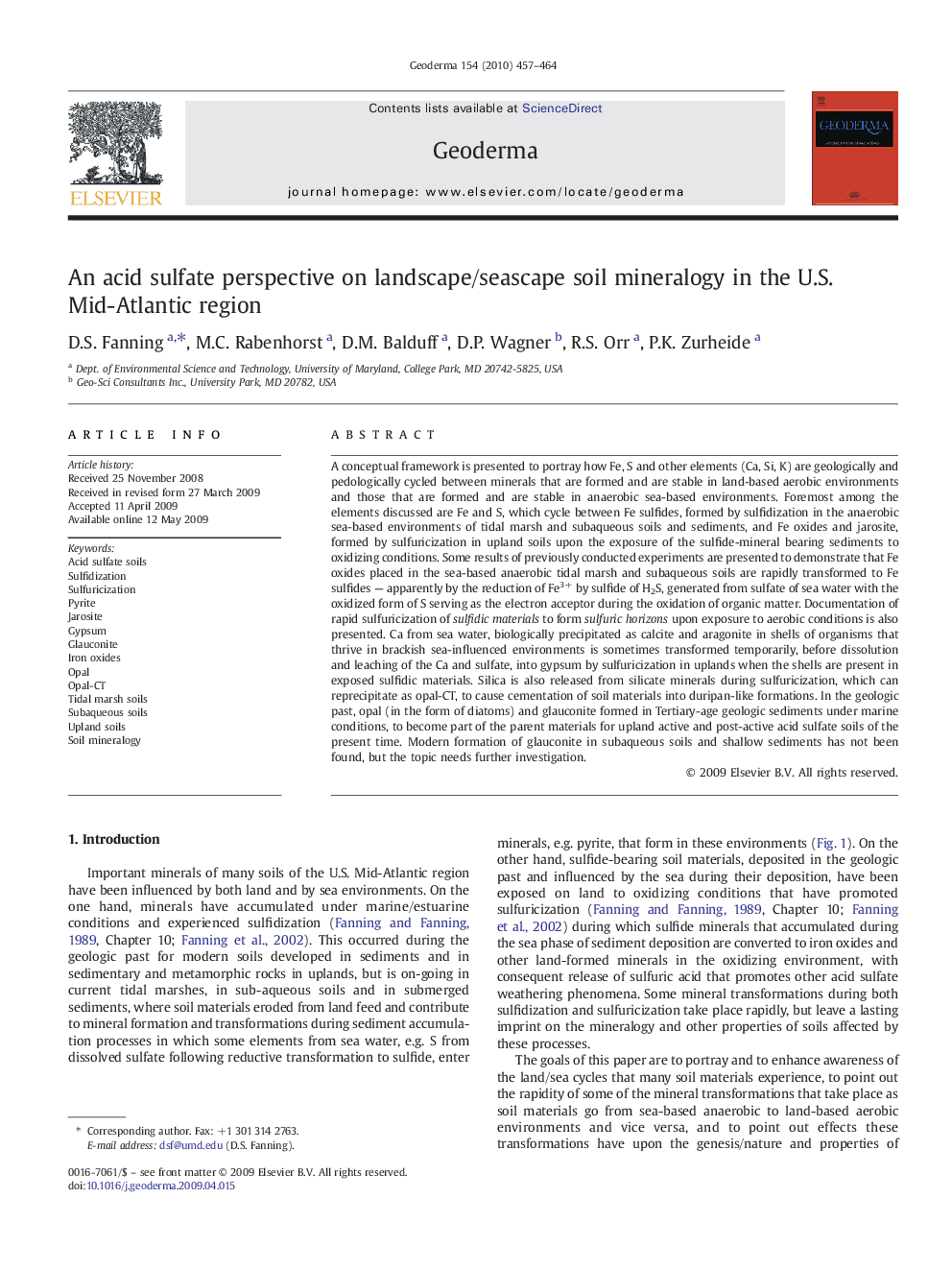| کد مقاله | کد نشریه | سال انتشار | مقاله انگلیسی | نسخه تمام متن |
|---|---|---|---|---|
| 4575017 | 1629525 | 2010 | 8 صفحه PDF | دانلود رایگان |
عنوان انگلیسی مقاله ISI
An acid sulfate perspective on landscape/seascape soil mineralogy in the U.S. Mid-Atlantic region
دانلود مقاله + سفارش ترجمه
دانلود مقاله ISI انگلیسی
رایگان برای ایرانیان
کلمات کلیدی
موضوعات مرتبط
مهندسی و علوم پایه
علوم زمین و سیارات
فرآیندهای سطح زمین
پیش نمایش صفحه اول مقاله

چکیده انگلیسی
A conceptual framework is presented to portray how Fe, S and other elements (Ca, Si, K) are geologically and pedologically cycled between minerals that are formed and are stable in land-based aerobic environments and those that are formed and are stable in anaerobic sea-based environments. Foremost among the elements discussed are Fe and S, which cycle between Fe sulfides, formed by sulfidization in the anaerobic sea-based environments of tidal marsh and subaqueous soils and sediments, and Fe oxides and jarosite, formed by sulfuricization in upland soils upon the exposure of the sulfide-mineral bearing sediments to oxidizing conditions. Some results of previously conducted experiments are presented to demonstrate that Fe oxides placed in the sea-based anaerobic tidal marsh and subaqueous soils are rapidly transformed to Fe sulfides - apparently by the reduction of Fe3+ by sulfide of H2S, generated from sulfate of sea water with the oxidized form of S serving as the electron acceptor during the oxidation of organic matter. Documentation of rapid sulfuricization of sulfidic materials to form sulfuric horizons upon exposure to aerobic conditions is also presented. Ca from sea water, biologically precipitated as calcite and aragonite in shells of organisms that thrive in brackish sea-influenced environments is sometimes transformed temporarily, before dissolution and leaching of the Ca and sulfate, into gypsum by sulfuricization in uplands when the shells are present in exposed sulfidic materials. Silica is also released from silicate minerals during sulfuricization, which can reprecipitate as opal-CT, to cause cementation of soil materials into duripan-like formations. In the geologic past, opal (in the form of diatoms) and glauconite formed in Tertiary-age geologic sediments under marine conditions, to become part of the parent materials for upland active and post-active acid sulfate soils of the present time. Modern formation of glauconite in subaqueous soils and shallow sediments has not been found, but the topic needs further investigation.
ناشر
Database: Elsevier - ScienceDirect (ساینس دایرکت)
Journal: Geoderma - Volume 154, Issues 3â4, 15 January 2010, Pages 457-464
Journal: Geoderma - Volume 154, Issues 3â4, 15 January 2010, Pages 457-464
نویسندگان
D.S. Fanning, M.C. Rabenhorst, D.M. Balduff, D.P. Wagner, R.S. Orr, P.K. Zurheide,